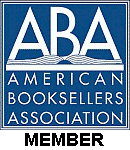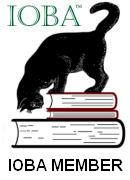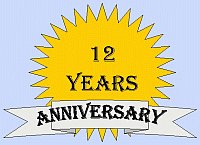Important Books in the History of Calligraphy
edited and with additional material by Steven Williams
 Before the beginning of the 20th Century little had been written about calligraphy except The Story of the Alphabet (1900) by Edward Clodd (1840-1930) and Sir Edward Maunde Thompson's (1840-1929) fine Handbook of Greek and Latin Paleography (1893) together with his volume English Illuminated Manuscripts, published in 1895 and out of print before 1906. But beginning with the publication by Edward Johnston (1872-1944) of his book Writing and Illuminating, and Lettering (1906), a steady stream of works about all aspects of the subject have been written. It can be argued that it probably because of the interest aroused by the pioneers in the practical side of the craft of calligraphy that this flood of calligraphic histories occurred, both in the United Kingdom and in the United States.
Before the beginning of the 20th Century little had been written about calligraphy except The Story of the Alphabet (1900) by Edward Clodd (1840-1930) and Sir Edward Maunde Thompson's (1840-1929) fine Handbook of Greek and Latin Paleography (1893) together with his volume English Illuminated Manuscripts, published in 1895 and out of print before 1906. But beginning with the publication by Edward Johnston (1872-1944) of his book Writing and Illuminating, and Lettering (1906), a steady stream of works about all aspects of the subject have been written. It can be argued that it probably because of the interest aroused by the pioneers in the practical side of the craft of calligraphy that this flood of calligraphic histories occurred, both in the United Kingdom and in the United States.
 About Edward Johnston
About Edward Johnston
At the end of the 19th century, the aesthetics and philosophy of William Morris and the Arts and Crafts movement attracted many calligraphers, particularly Englishman Edward Johnston. Johnston was introduced to 10th-century manuscripts, at the Fitzwilliam Museum by Sir Sydney Cockerell (1867-1962) and based his own calligraphy on them. Johnston and his students went on to revive and popularise English broad-pen calligraphy.
 Johnston is best remembered for his enduring association with the London Underground, i.e., subway. Signage for the London Underground used a roundel with the station name in the blue bar beginning in 1908, but this pre-Johnston design used a roundel that was a solid red disc. In 1913 Edward Johnston, with some collaboration from his former student, font designer Eric Gill, began work on a commission for new font design for use in the London Underground promotional literature and signage. The commission for the design work came from Frank Pick (1878-1941), publicity officer for London Underground.
Johnston is best remembered for his enduring association with the London Underground, i.e., subway. Signage for the London Underground used a roundel with the station name in the blue bar beginning in 1908, but this pre-Johnston design used a roundel that was a solid red disc. In 1913 Edward Johnston, with some collaboration from his former student, font designer Eric Gill, began work on a commission for new font design for use in the London Underground promotional literature and signage. The commission for the design work came from Frank Pick (1878-1941), publicity officer for London Underground.  The new font that was developed had a distinctive sans-serif typeface and this new font was brought into use for London Underground promotional materials beginning in 1916. The Johnston font, as it came to be known, was originally called the Underground font and occasionally the Johnston's Railway font. The closest modern equivalent to the Johnston font is the London Underground font.
The new font that was developed had a distinctive sans-serif typeface and this new font was brought into use for London Underground promotional materials beginning in 1916. The Johnston font, as it came to be known, was originally called the Underground font and occasionally the Johnston's Railway font. The closest modern equivalent to the Johnston font is the London Underground font.
After completing the font design, Johnston then reworked the art design for the classic London Underground roundel and bar bullseye design to incorporate his new font and these design modifications were completed by 1917. By 1919 the new bullseye design began appearing in publicity materials and, beginning in the early 1920s, it began to show up on station exterior signs and platform nameboards.  The Johnston typeface was modernized for London Transit by Eiichi Kono in 1979 and this redesign of the Johnston font was named New Johnston to reflect its incorporation of all of Johnston's original core font design elements.
The Johnston typeface was modernized for London Transit by Eiichi Kono in 1979 and this redesign of the Johnston font was named New Johnston to reflect its incorporation of all of Johnston's original core font design elements.
Edward Johnston resources
Edward Johnston the designer
Edward Johnston and Frank Pick
The Edward Johnston Foundation
The Johnston font
The London Underground roundel
Eiichi Kono about the New Johnston typeface
Writing and Illuminating, and Lettering by Edward Johnston
 The following are among the most important early reference books on calligraphy. The British Museum published a guide to the collection of manuscripts they had in 1906 (Guide to the Manuscripts, Autographs, Charters, Seals, Illuminations and Bindings Exhibited in the Department of Manuscripts and in the Grenville Library). At about the same time, John William Bradley (1830-1916) was publishing illustrated books on illuminating, its history and development. In 1907 the British Museum published an important series of four books titled Reproductions of Illuminated Manuscripts. Each book in this series included fifty loose collotype plates, i.e., mechanically printed photographic plates. In 1920 William Albert Mason published A History of the Art of Writing, a work of considerable scholarship dealing with the subject of picture writing in the Americas together with the growth of letter-form in Egypt, Phoenicia, Babylon, Assyria, Crete, Greece and Rome. This book should be of great interest for a study the formation of alphabets.
The following are among the most important early reference books on calligraphy. The British Museum published a guide to the collection of manuscripts they had in 1906 (Guide to the Manuscripts, Autographs, Charters, Seals, Illuminations and Bindings Exhibited in the Department of Manuscripts and in the Grenville Library). At about the same time, John William Bradley (1830-1916) was publishing illustrated books on illuminating, its history and development. In 1907 the British Museum published an important series of four books titled Reproductions of Illuminated Manuscripts. Each book in this series included fifty loose collotype plates, i.e., mechanically printed photographic plates. In 1920 William Albert Mason published A History of the Art of Writing, a work of considerable scholarship dealing with the subject of picture writing in the Americas together with the growth of letter-form in Egypt, Phoenicia, Babylon, Assyria, Crete, Greece and Rome. This book should be of great interest for a study the formation of alphabets. A list of the works by John William Bradley
A list of the works by John William BradleyA Manual of Illumination on Paper and Vellum (1860)
A Dictionary of Miniaturists, Illuminators, Calligraphers, and Copyists (1889)
The Life and Works of Giorgio Giulio Clovio, Miniaturist, with Notices of His Contemporaries, and of the Art of Book Decoration in the Sixteenth Century (1891)
Historical Introduction to the Collection of Illuminated Letters and Borders in the National Art Library Victoria and Albert Museum (1901)
Illuminated Manuscripts (1909)
 With the development of photography and process reproduction the range of examples showing epigraphy and paleography (aka palaeography) has increased to a degree not even imagined during the early days of the century. In 1932 B. L. Ullman, aka Berthold Louis Ullman (1882-1965), of the University of Chicago published Ancient Writing and Its Influence, which brought the history of the alphabet more up to date and included observations on the Sinai stones. The Sinai stones are carved inscriptions in the Proto-Sinaitic script, one of two known similar and undeciphered scripts ancestral to nearly all modern alphabets. These inscriptions were found in a temple of Hathor in Serabit el-Khadim, an ancient mining area in the Sinai peninsula. They were discovered in 1904-05 by Flinders Petrie (1853-1942) and have been dated at 1500 BCE.
With the development of photography and process reproduction the range of examples showing epigraphy and paleography (aka palaeography) has increased to a degree not even imagined during the early days of the century. In 1932 B. L. Ullman, aka Berthold Louis Ullman (1882-1965), of the University of Chicago published Ancient Writing and Its Influence, which brought the history of the alphabet more up to date and included observations on the Sinai stones. The Sinai stones are carved inscriptions in the Proto-Sinaitic script, one of two known similar and undeciphered scripts ancestral to nearly all modern alphabets. These inscriptions were found in a temple of Hathor in Serabit el-Khadim, an ancient mining area in the Sinai peninsula. They were discovered in 1904-05 by Flinders Petrie (1853-1942) and have been dated at 1500 BCE.
 Professor Elias Avery Lowe (1879-1969) of Oxford, in his Handwriting chapter contribution to the book The Legacy of the Middle Ages (1926), edited by C. G. Crump and E. F. Jacob, made a major contribution to the history of written script. It he writes about the development of hand written script before the time of Charlemagne. This is an excellent essay, which should be read by all serious students of calligraphy. James Wardrop (1905-1957) of the Victoria and Albert Museum has also written a comparably useful essay Palatino and His Circle in Signature, No. 14, 1952. Giambattista Palatino was a 16th century Italian master of calligraphy. Wardrop is also noted for his book The Script of Humanism: Some Aspects of Humanistic Script, 1460-1560 (1963).
Professor Elias Avery Lowe (1879-1969) of Oxford, in his Handwriting chapter contribution to the book The Legacy of the Middle Ages (1926), edited by C. G. Crump and E. F. Jacob, made a major contribution to the history of written script. It he writes about the development of hand written script before the time of Charlemagne. This is an excellent essay, which should be read by all serious students of calligraphy. James Wardrop (1905-1957) of the Victoria and Albert Museum has also written a comparably useful essay Palatino and His Circle in Signature, No. 14, 1952. Giambattista Palatino was a 16th century Italian master of calligraphy. Wardrop is also noted for his book The Script of Humanism: Some Aspects of Humanistic Script, 1460-1560 (1963).
 French scholarship just before World War II was very active in this subject area and actively published recently discovered material with facsimile photographic illustrations. A notable title from this period intensely active French paleographic research is the book L'Écriture Latine de la Capitale Romaine à la Minuscule (1939) by Jean Mallon (d. 1982). It deals with early specimens of the written lower case letter from a period even earlier than Sir Edward Maunde Thompson's great work.
French scholarship just before World War II was very active in this subject area and actively published recently discovered material with facsimile photographic illustrations. A notable title from this period intensely active French paleographic research is the book L'Écriture Latine de la Capitale Romaine à la Minuscule (1939) by Jean Mallon (d. 1982). It deals with early specimens of the written lower case letter from a period even earlier than Sir Edward Maunde Thompson's great work.
 A more recent work recommended for consideration by students of calligraphy and paleography is A Book of Scripts (1949) by Alfred John Fairbank (1895-1982). Fairbank was a noted British calligrapher and a strong advocate the italic hand (aka handwriting form or style) in the 20th century. He is also noted for both his active collecting of photostatic copies of examples of italic handwriting by 16th century Cambridge scholars and for founding the Society for Italic Handwriting. Fairbank's book is a outline survey of handwriting from the fourth to the twentieth centuries. Other recent work of note are the beautiful photographic reproductions of the detailed work of twelfth-century artists taken from the Winchester Bible by Walter Fraser Oakeshott (1903–1987) for his books Sigena: Romanesque Painting in Spain and the Winchester Bible Artists (1972) and The Two Winchester Bibles (1981).
A more recent work recommended for consideration by students of calligraphy and paleography is A Book of Scripts (1949) by Alfred John Fairbank (1895-1982). Fairbank was a noted British calligrapher and a strong advocate the italic hand (aka handwriting form or style) in the 20th century. He is also noted for both his active collecting of photostatic copies of examples of italic handwriting by 16th century Cambridge scholars and for founding the Society for Italic Handwriting. Fairbank's book is a outline survey of handwriting from the fourth to the twentieth centuries. Other recent work of note are the beautiful photographic reproductions of the detailed work of twelfth-century artists taken from the Winchester Bible by Walter Fraser Oakeshott (1903–1987) for his books Sigena: Romanesque Painting in Spain and the Winchester Bible Artists (1972) and The Two Winchester Bibles (1981).
 By 1930, interest in hand writing and lettering had increased to the point where it had become a subject in the training of Art Teachers. This training of this generation was provided by the immediate followers of the initial group who had dedicated their lives to its cause. Lettering of Today by Walter Ben Hunt and Edwin Cornelius Hunt, published in 1937, is a good comprehensive compilation of the work of this second generation of calligraphers and calligraphy advocates. Important relatively modern books on the development of alphabets worldwide have also been published David Diringer (1900-1975), an important scholar on the subject.
By 1930, interest in hand writing and lettering had increased to the point where it had become a subject in the training of Art Teachers. This training of this generation was provided by the immediate followers of the initial group who had dedicated their lives to its cause. Lettering of Today by Walter Ben Hunt and Edwin Cornelius Hunt, published in 1937, is a good comprehensive compilation of the work of this second generation of calligraphers and calligraphy advocates. Important relatively modern books on the development of alphabets worldwide have also been published David Diringer (1900-1975), an important scholar on the subject.
 A list of the works by David Diringer
A list of the works by David DiringerThe Alphabet: A Key to the History of Mankind (1948)
The Hand-Produced Book (1953)
The Story of the Aleph Beth (1958)
Writing: Its Origins and Early History (1962)
The Illuminated Book: Its History and Production (1967)
History of the Alphabet (1977)
The Book before Printing: Ancient, Medieval and Oriental (1982; previously published as The Hand-Produced Book)
As the art itself has progressed, so has the literature representing calligraphy. The aforementioned books are great historical references, but technical books that will walk you through the art of calligraphy are particularly easy to access.
Source: The Best Calligraphy Books by Jim Cox from Content for Reprint.
History Resources
Western Caligraphy
The Winchester Bible
Textual Resources
Ancient Writing and Its Influence by Berthold Louis Ullman (through page 101)
Correspondence of the family of Hatton, volume 1 edited by Sir Edward Maunde Thompson
Correspondence of the family of Hatton, volume 2 edited by Sir Edward Maunde Thompson
Guide to the Manuscripts, Autographs, Charters, Seals, Illuminatins and Bindings Exhibited in the Department of Manuscripts and in the Grenville Library (1906)
Handbook of Greek and Latin Palaeography by Sir Edward Maunde Thompson
Handwriting chapter by Elias Avery Lowe beginning page on 197 of The Legacy of the Middle Ages edited by C. G. Crump and E. F. Jacob
A History of the Art of Writing by William Albert Mason
Researches in Sinai by Sir William Matthew Flinders Petrie
Shakespeare's Handwriting: A Study by Sir Edward Maunde Thompson
Biographical Resources
Edward Clodd at Wikipedia
Edward Clodd at Answers.com
Giorgio Giulio Clovio
Sir Sydney Cockerell
David Diringer
Eric Gill
Elias Avery Lowe
Sir William Matthew Flinders Petrie
Sir Walter Fraser Oakeshott
Sir Edward Maude Thompson
Berthold Louis Ullman
James Wardrop
Home
Older Article: Georges Herge Creator of Tintin, The Final Years








